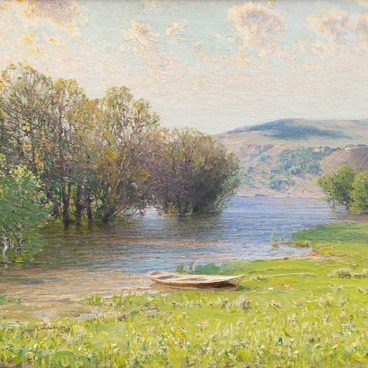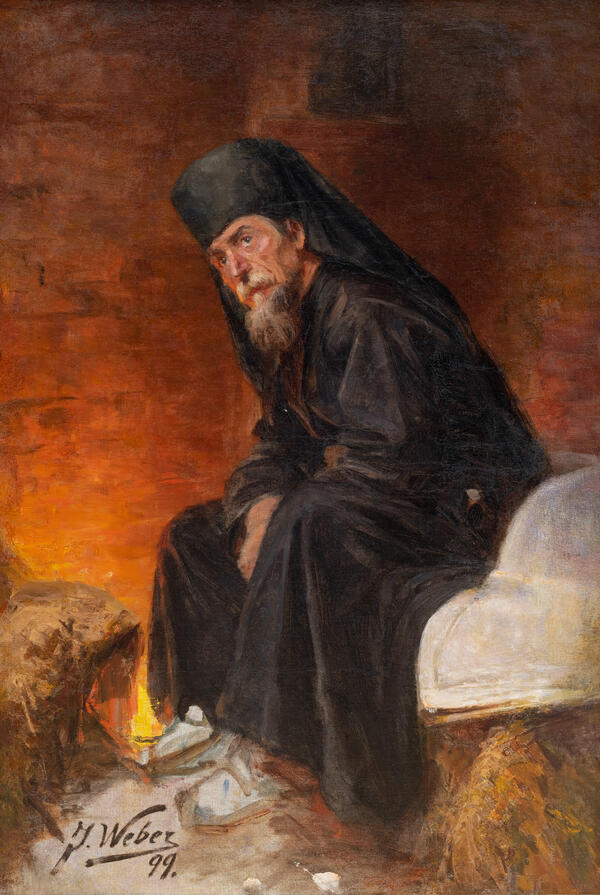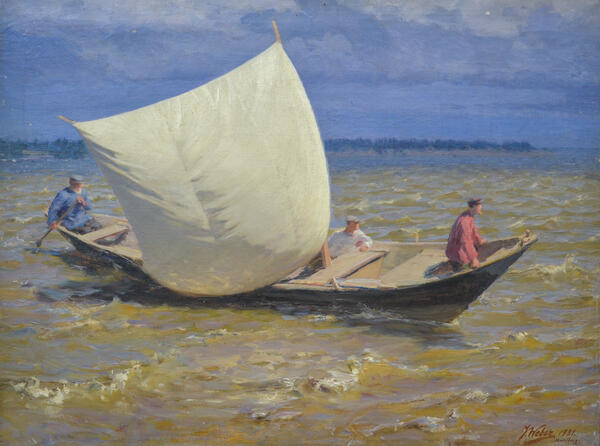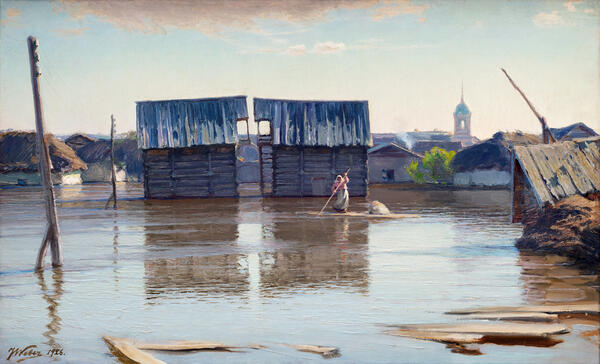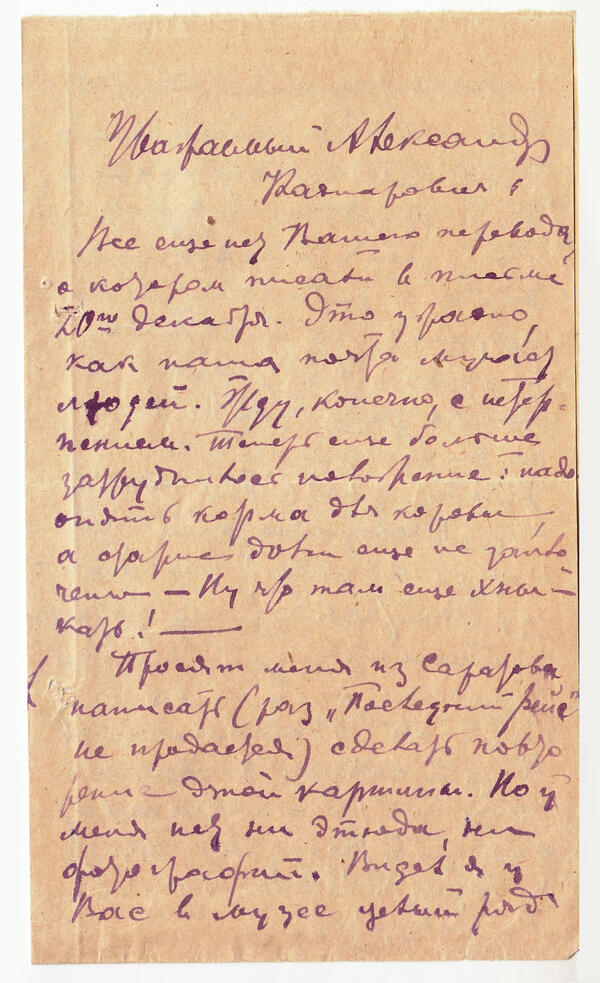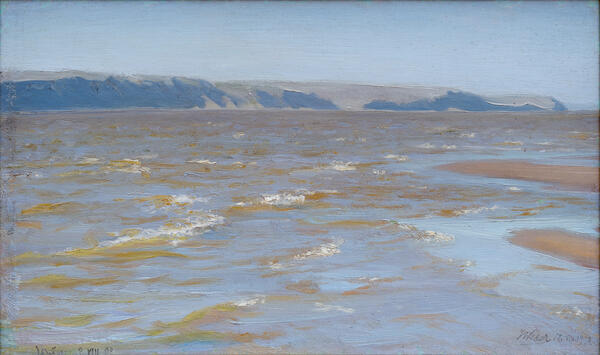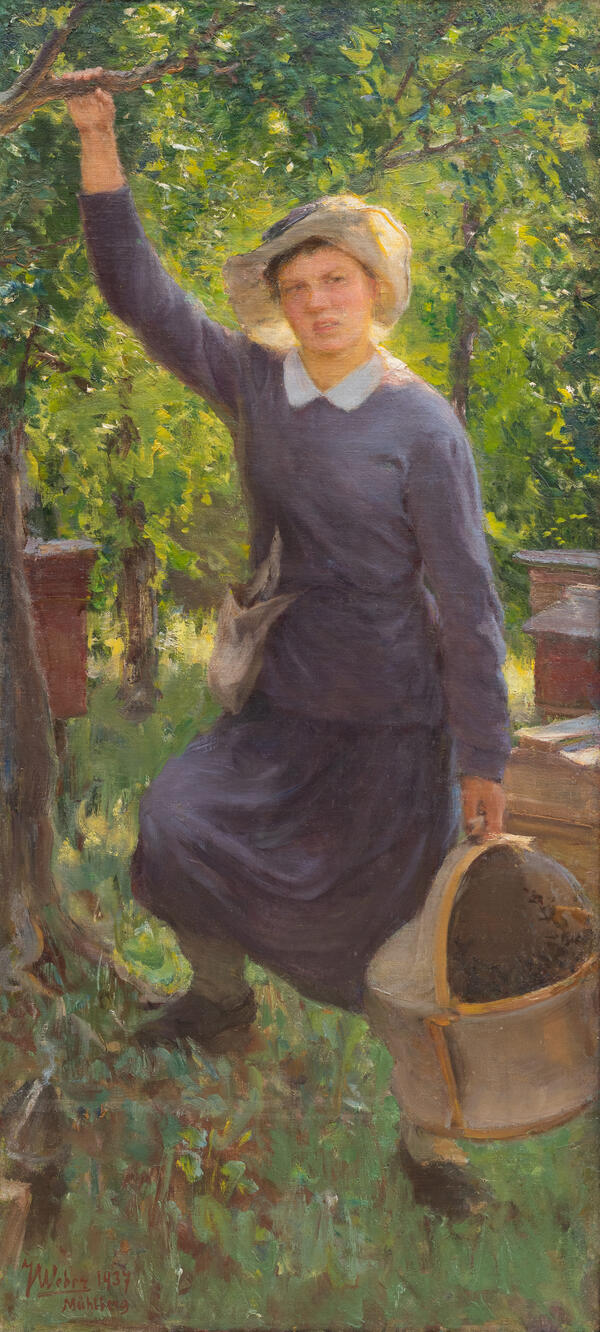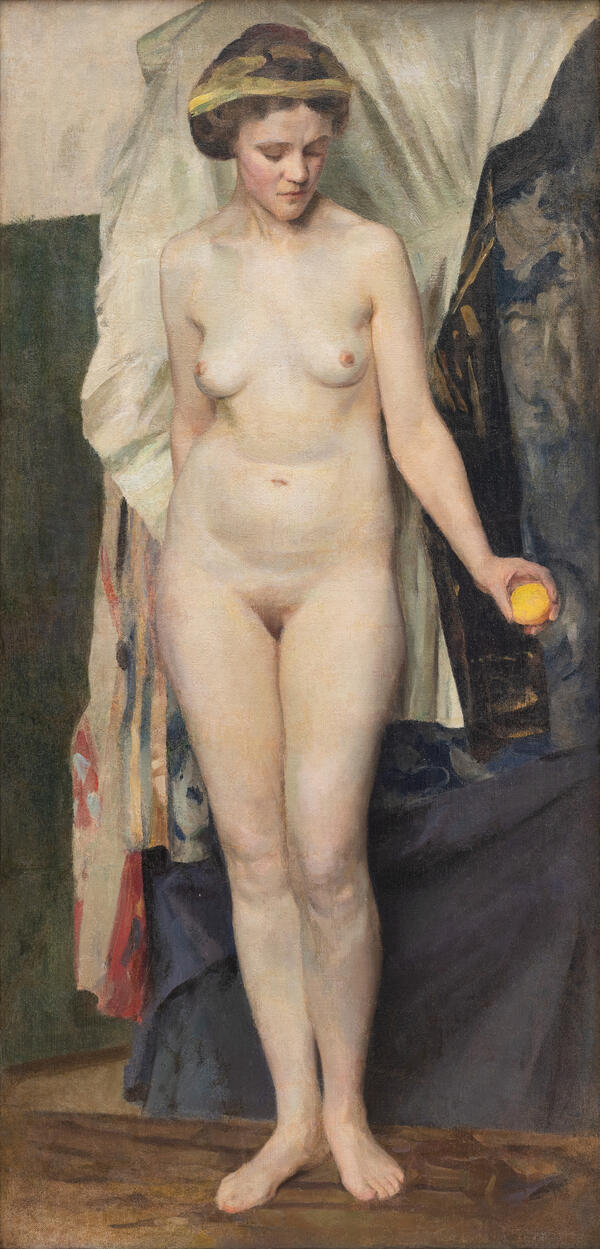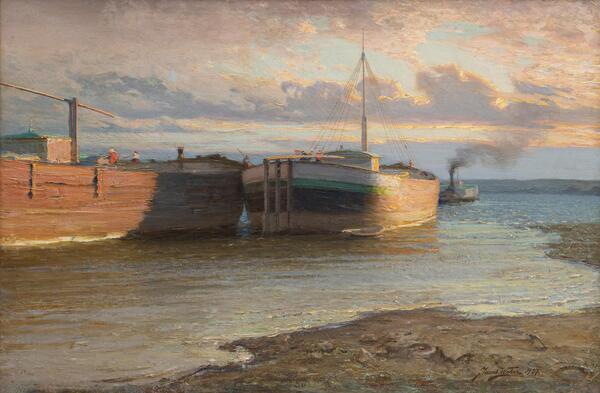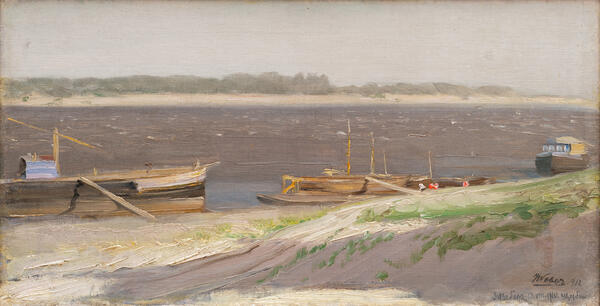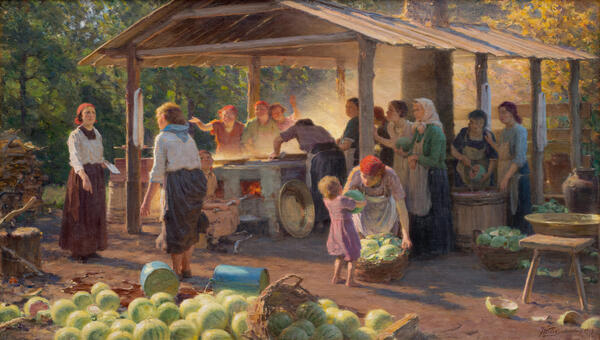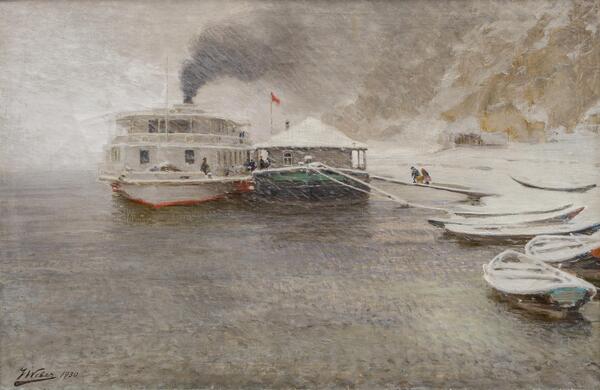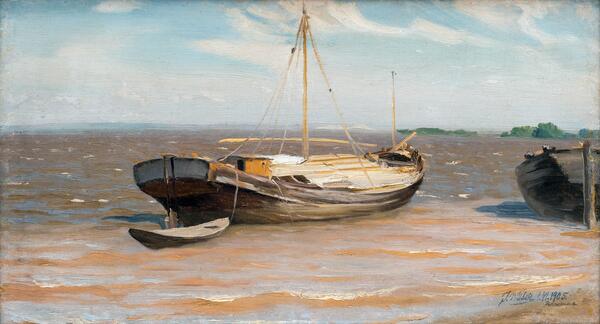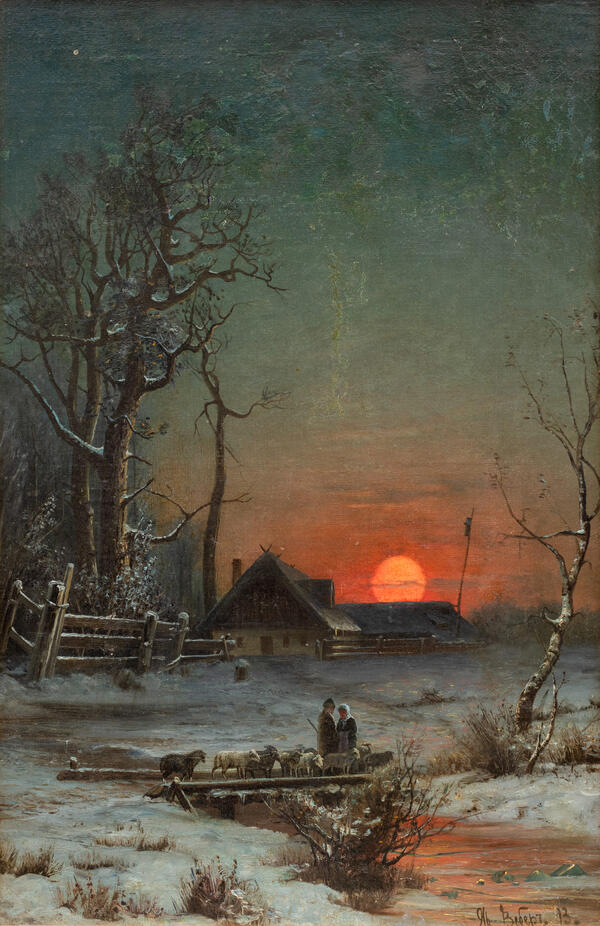The collection of the Engels Museum of Local Lore includes one of the numerous studies created by the Volga artist Yakov Yakovlevich Weber while working on his famous paintings “Grandfather Mazai and the Hares” and “The Wolf in the Forest”.
The canvas “Spring Flood” depicts the flood in all its springtime splendor, with gnarled tree trunks submerged in water, fresh green foliage on the fluffy crowns and blue shadows on the picturesque surface of the water. Beyond the horizon line, the blue sky shines; there is nothing superfluous, nothing interferes with the awakening of nature. The air is filled with bright sunlight and the breath of the first warmth.
In 1912, Yakov Weber painted “Grandfather Mazai and the Hares” based on the eponymous poem by Nikolay Alekseevich Nekrasov. After its success at the Spring Exhibition in the halls of the Imperial Academy of Arts in St. Petersburg in 1912, the painting won great acclaim very quickly. However, the work disappeared together with other six canvases, which were taken in 1914 by a representative of the famous St. Petersburg publishing company “Richard” to France for reproduction on postcards in color.
The artist’s family archive has preserved a black-and-white photograph of the painting and sketches of hares, showing the accurate depiction of the animals, testifying to Weber’s talent as an animalist. His gift was noticed by the artist Konstantin Savitsky. It is known that the sketches were created on the Volga in the floodplain of Ilovatka village, while the painting itself was created in St. Petersburg, where the artist’s fellow hunters brought live hares from the Volga at his request. According to the memories of the artist’s son Philip Yakovlevich Weber, the hares were brought “during the spring molt, not white and not gray yet”.
Fortunately, a large number of reproductions were
made of the painting “Grandfather Mazai and the Hares”, including those for
newspapers, magazines and calendars. The high-quality art postcards make it
possible to imagine how the original of the famous work, which later
disappeared, looked like, and serve as scientific material for researchers of
the Volga artist’s work.


